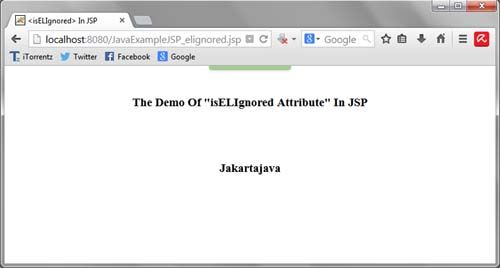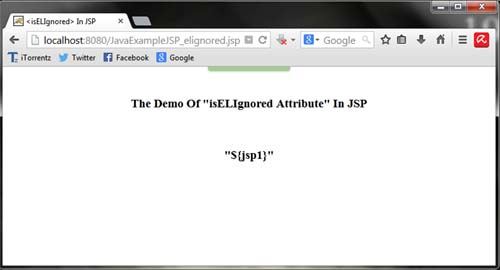In this example we will explain about ElAttribute EL(Expression Language). As jsp used all the Expressions that are linked with EL attributes by default. Bt if user need to ignore them manually user has to change page directive ‘true’.
This is the main concept which we are discussing ignoring the ElExpressions. In the program that we present the condition is to concat the two strings with each other bt when in the program page directive will true it will ignore the expression of jsp function. The page directive has to be false that is by default in the jsp attribute. And we also use concat function in the program so far….
<%@ page isELIgnored=”false” %>
<%@ taglib uri=”http://java.sun.com/jsp/jstl/core” prefix=”c” %>
<html>
<head>
<title><isELIgnored> In JSP</title>
</head>
<body>
<br><h3 align=”center”>The Demo Of “isELIgnored Attribute” In JSP</h3></br>
<c:set var=”jsp1″ value=”Jakarta”/>
<c:set var=”jsp2″ value=”java”/>
<c:choose>
<c:when test=”${jsp1 eq ‘Jakarta’}”>
<c:set var=”concat” value=”${jsp1}${jsp2}” />
<h3 align=”center”><br><c:out value=”${concat}”></h3></br></c:out>
</c:when>
<c:otherwise>
<h3 align=”center”>”${jsp1}”</h3>
</c:otherwise>
</c:choose>
</body>
</html>

